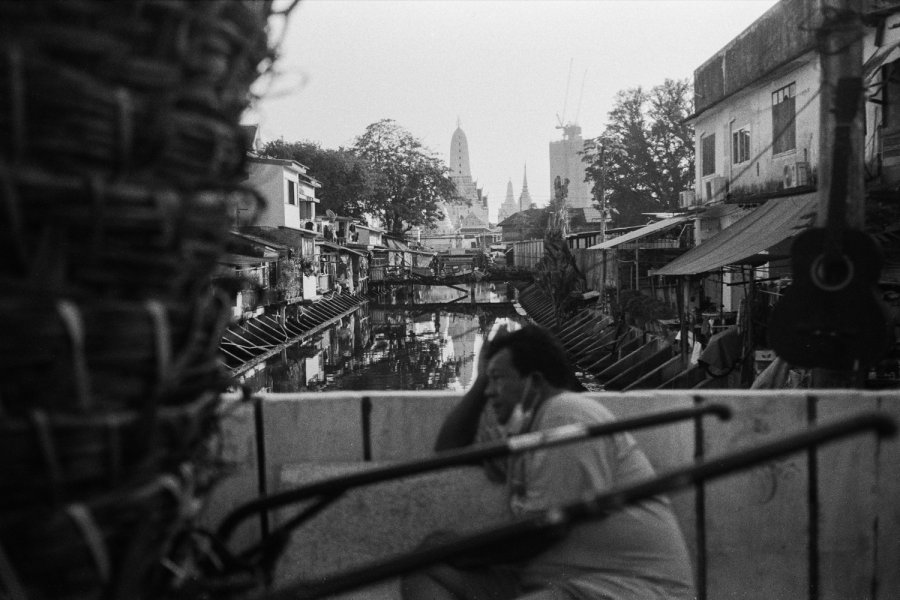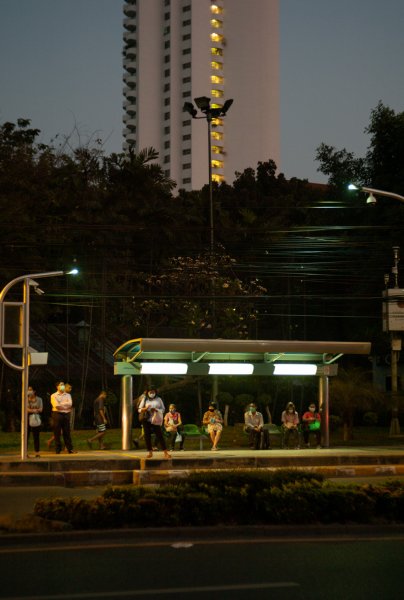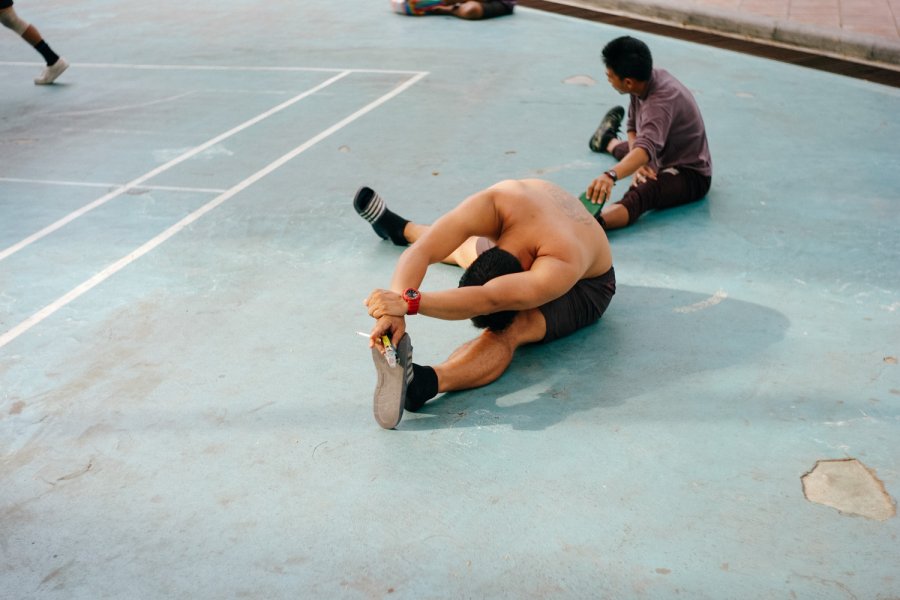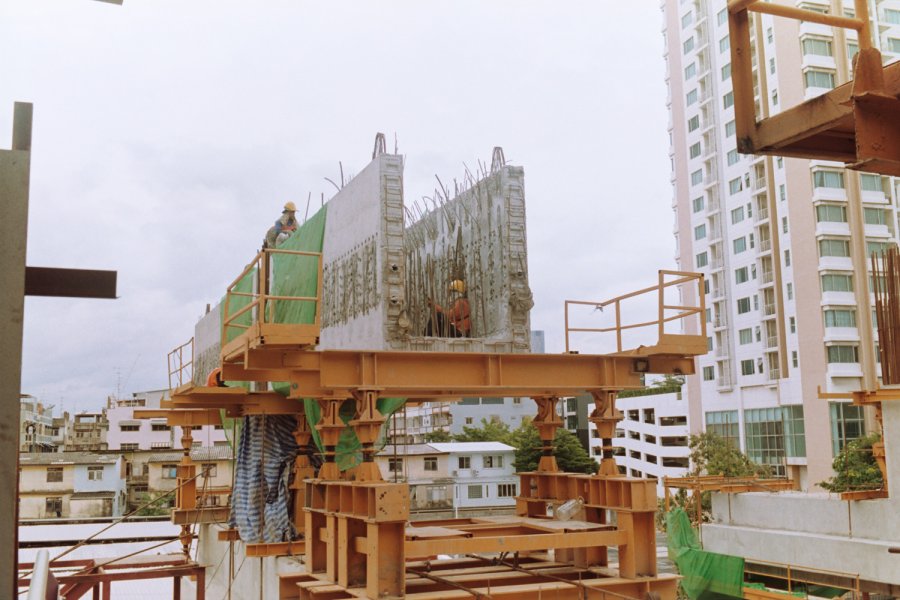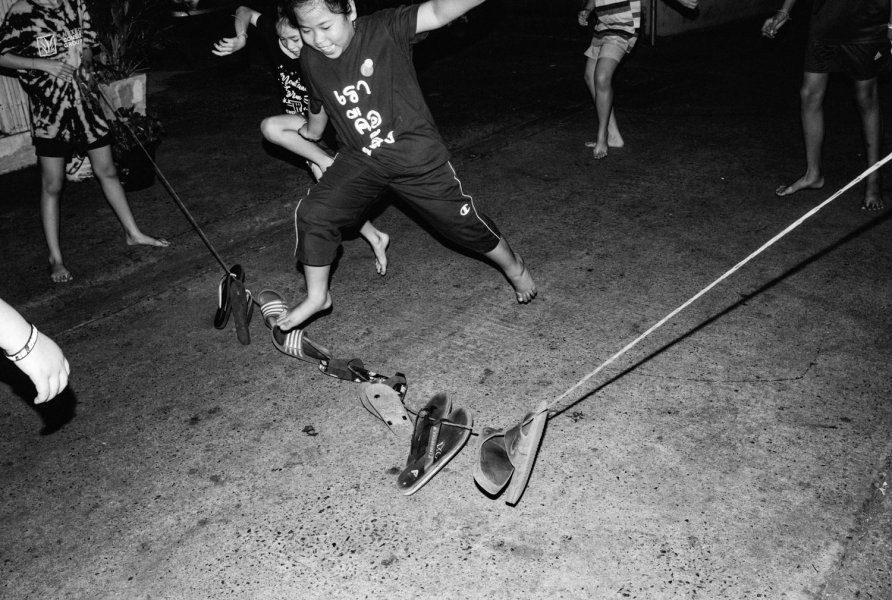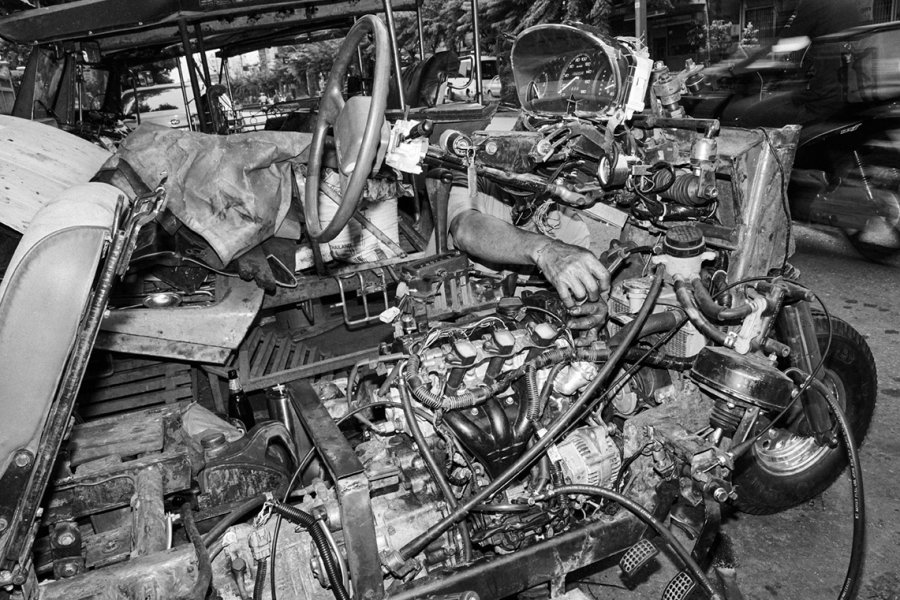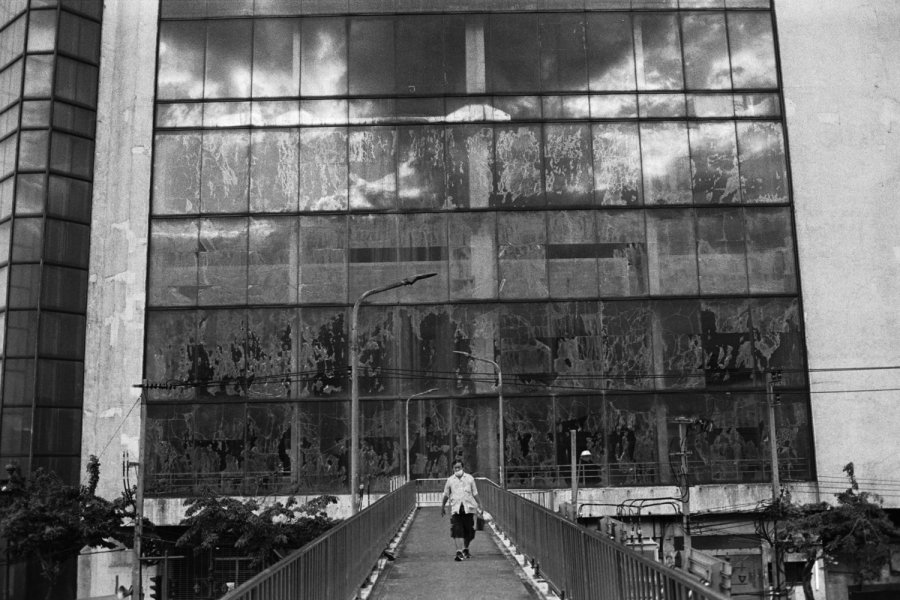As photographer Graham Meyer, 33, prepares to move away from Bangkok, he has taken to the streets to document Thonburi, the neighborhood he has lived in for more than a decade. In the process, he has not only bid his own farewells. He has also peeled back the curtain on the spaces, rituals, and communities that are disappearing as Thonburi gentrifies.
Over the last half of the 2010s, Thonburi has experienced an increasingly rapid transformation.
Markets have been razed and malls erected, most glaring among them IconSiam, the luxury landmark by the river. Rail lines now cut through communities, extending further and further west as young white-collar workers seek affordable property away from the city center. Bars, restaurants, and houses that once lined the river have been replaced by high-rises.
Recently, Klongsan Plaza tenants were told to vacate after the building’s lease expired. The space now seems destined to become another condo, hotel, or shopping center.
Image courtesy of Graham Meyer / falsedigital.com
Unless you live in Thonburi, you may not have noticed these events. They’ve largely transpired with mechanical efficiency, as they often do in Bangkok, even if time seems to have hardly moved at all. “Without [distinguishable] seasons, time moves in a different way in Bangkok. It feels as if it never passes,” says photographer and Thonburi resident Graham Meyer, who posts artwork under the handle
False Digital (
www.falsedigital.com).
For more than 10 years, Meyer has called Thonburi home, but he admits he never felt compelled to document the landscape around him until last year, when the pandemic put plans to move to Japan on hold. It also left him, like all of us, largely bound to the confines of his community.
Knowing a departure date loomed, even if it was further off, Meyer picked up his camera and started photographing the people and places around him over a series of long walks—a personal way to say goodbye.
”I started shooting things I walk past every day but never thought to photograph,” he says. “Things that were disappearing but special.”
Shot mostly on film, his images reveal a side of Thonburi overshadowed by breakneck-pace development: a man stretching in a park with a cigarette in hand, kids skipping over a makeshift jump rope fashioned out of shoes, a fake ivy wall outside a flattened stretch of land set to become a condo. They’re often funny and absurd. “I’m interested in things that are silly, off-putting, or out of place,” he says. “I like asking questions with my pictures.”
Image courtesy of Graham Meyer / falsedigital.com
Sometimes, however, they’re foreboding. In many images, the Four Seasons Residences across the water rise up like the monolith in “2001: A Space Odyssey,” offering a look into the future for this valuable land along the river.
As Meyer has said goodbye to Thonburi, he has revealed a neighborhood losing parts of itself, too—an unwitting documentarian of a district in transition.
He says the construction of the BTS Gold Line wreaked havoc on the neighborhood, making already busy roads nightmarishly congested as traffic lanes were reduced to one on each side of Charoen Nakhon Road.
“I try to show what everyday life is like in Thailand without the National Geographic gloss that Western audiences are accustomed to. It’s a local community, not a zoo,” he explains.
Image courtesy of Graham Meyer / falsedigital.com
Meyer says he’s drawn to “absurd things,” like this shot of a man stretching before exercise with a cigarette between his fingers (see above). But he also likes asking questions, both literally and with his camera.
He explains that for years he saw men gathering to play takraw in a riverside park, but only last year did he finally ask them about it. Once he spoke to them, he learned that one of the players is a former muay Thai champion from Isaan, and most were blue-collar workers in the community: security guards, newspaper deliverymen, factory linemen. “They’re normal people but kind of local legends when it comes to takraw.”
Image courtesy of Graham Meyer / falsedigital.com
Most, though not all, of Meyer’s Thonburi photos are shot on film.
He cites several reasons for this. For example, “film makes you think about the next shot you take, not the one you just took,” he says.
But he also compares film to memory and thinks this quality isn’t something digital cameras can replicate. “It’s grainy and imperfect, like the way we dream, or how we remember things.”
Image courtesy of Graham Meyer / falsedigital.com
“Many of the people living here [in the local community] are from Isaan. They work in the factories here,” says Meyer. “Some never even leave their soi.”
But he adds that a Japanese man who runs a factory on this street organizes return trips to Isaan for his workers every year, and he has converted an empty building into a community hall, with a ping pong table and room to unwind after work.
The kids jumping rope (above) all live in this community. Meyer says he celebrated Songkran with them and their families each of the six years prior to the pandemic.
Image courtesy of Graham Meyer / falsedigital.com
The shot you see below also appears on the cover of this issue. Meyer says it’s of a building called The Merry Kings Department Store, an abandoned mall at the Wongwian Yai roundabout.
“Supposedly it was one of the first large malls in Bangkok. When I first moved here, only the first floor was open and they sold deadstock goods from the 80s. The reflective film on the windows are falling off and every day at sundown they create these interesting patterns,” he says.
It’s more than a prop for him, though. “I bought a Kodak film coffee mug there which I still use every morning.”
A few years ago, the mall finally closed. “Even when it was open, they almost never had any customers,” Meyer says. “I’d imagine it was a bit of a fire hazard in it’s current state, too.”
It’s still standing, a memory fading in real time that’s bound to be bulldozed before long. But in Meyer’s photos, it will live on, like so many of Thonburi’s disappearing spaces and communities.
Image courtesy of Graham Meyer / falsedigital.com
